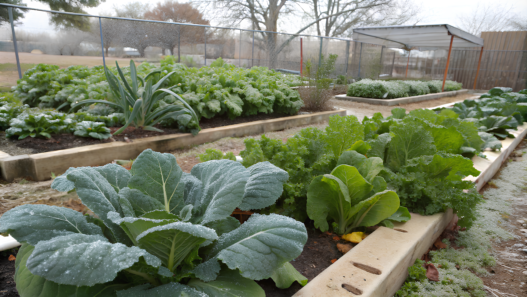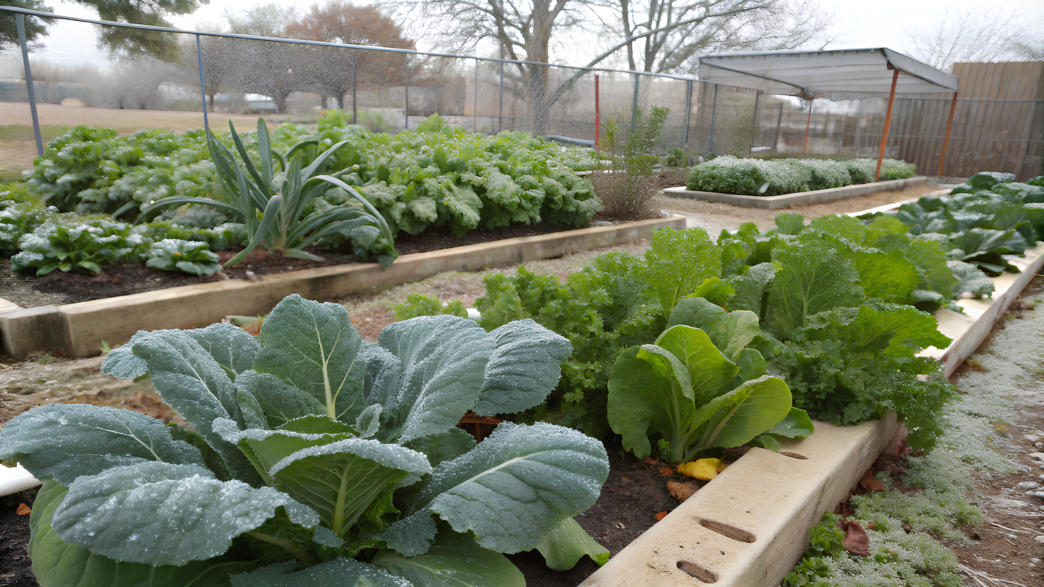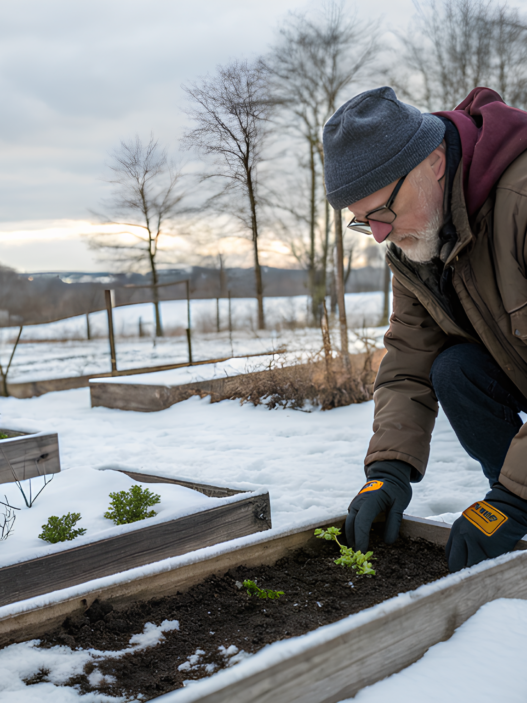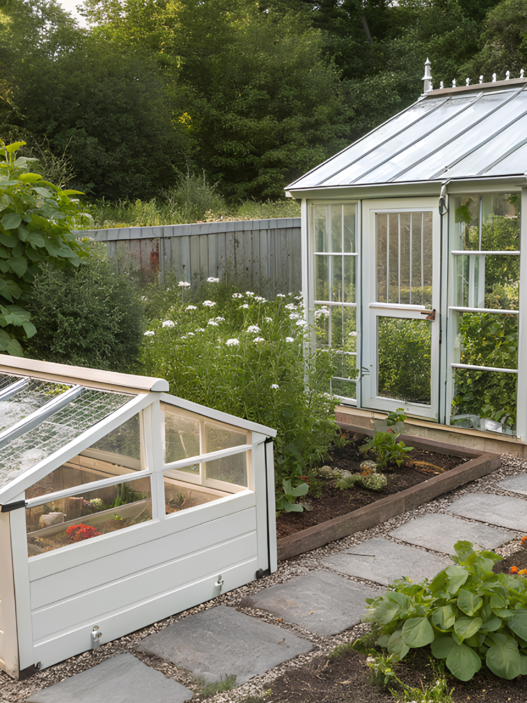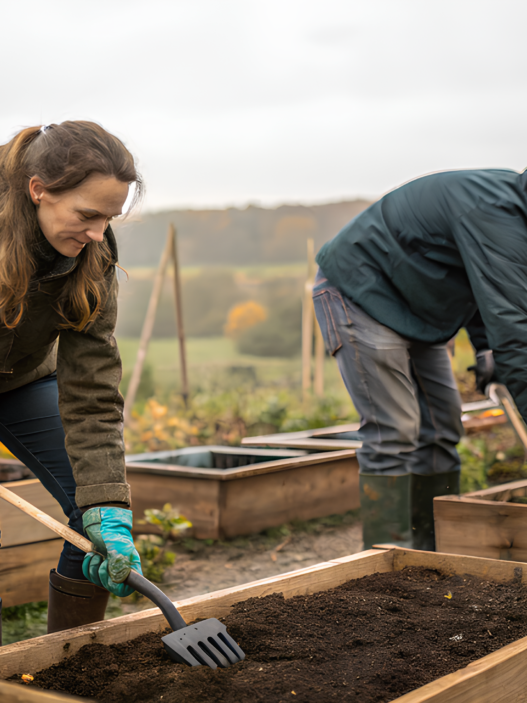Texas is certainly known for good harvests during the hot summer months, but the vegetable garden is not neglected during the cooler months either and is a lot of fun. Growing winter vegetables in Texas can be very profitable while always keeping you with fresh vegetables, whereas most people buy them at the store. No matter how experienced you are in gardening, knowing what and when to plant in your vegetable garden is extremely important and it’s obvious. This article will detail the best winter vegetables to plant in Texas, the ideal timing for planting them, and some helpful tips to keep your vegetable garden fruitful all winter long.
Why You Should Grow Winter Vegetables in Texas

The mild Texas winters allow for year-round production, which is why gardening in this region has its advantages during the cooler months. That is, of course, if you can choose your crops wisely. There are fewer pests in the garden in the winter, less watering is required, and the harvest of greens, root vegetables, and frost-resistant plants is a joy.
The fall and winter period is the best time for beginning gardeners because you can plant small beds and learn the basics without the hot summer sun. Plus, winter crops are easier to care for, and their resistance can significantly reduce pest control costs.
When to Plant Winter Vegetables in Texas

If we decide exactly when to plant winter vegetables in Texas, then a good vegetable harvest is guaranteed. In Texas, cold-resistant crops are planted from late summer or early fall. This gives the plants a chance to take root before frost. Usually, the right time for planting is from September to November, but depending on the region, the timing may vary slightly. For example, in northern Texas, it is worth starting planting in early September and finishing by mid-October, while in the central part of the state, the optimal time is from late September to October. Well, in southern Texas, you can plant until November, since it is warmer and the temperature is more stable.
If you follow these timings, the plants will be able to develop a strong root system before the cold weather, which is especially important for such delicate crops as lettuce and spinach.
Interesting fact. Broccoli, cauliflower, and cabbage become even sweeter after a light frost.
The Best Winter Vegetables to Plant in Texas
So let’s get to the bottom of what’s best winter vegetables to plant in texas. Let’s start with leafy greens — spinach, kale, and lettuce all thrive in cool weather.
Spinach, for example, is frost-hardy and a great source of vitamins. Plant in mid-fall for an early winter harvest. Try the Bloomsdale variety, which is well-known for its frost resistance.
Kale only gets better after a frost, and lettuce (especially Romaine and Butterhead) adds variety to your table.
Root vegetables are also great for the winter vegetables in texas. For example, carrots and beets are low-maintenance and can withstand even cool nights. Radishes, which mature quickly (in just 30 days), are also great for winter planting and add a little spice to your dishes.
You can’t ignore the brassicas, such as broccoli, cauliflower, and cabbage. These vegetables all love the cold and thrive in mild Texas winters. Broccoli, for example, can be grown from seedlings planted in late summer and harvested in winter.
Preparing Your Garden for Winter in Texas

In order to achieve a good harvest, it is important not only to plant correctly, but also to prepare your garden for winter. And as always, you need to start by improving the soil by adding a layer of organic compost. This will enrich the soil with nutrients that are so necessary for winter crops. Mulching around the plants will help retain moisture and maintain a constant soil temperature. This is especially important for root crops that need stable conditions.
Don’t forget about watering. Although less water is usually needed in the winter, it is still important to ensure that the soil does not dry out, especially in dry areas like West Texas. Maintaining the right moisture helps the plants tolerate the cold and ultimately produce a good harvest.
Winter Gardening Supplies
If you need help with your winter garden, here are a few Amazon items that might come in handy:
- Agrotextile. Protects delicate plants from unexpected frosts and pests. Agfabric is a lightweight and effective covering material that works great.
- Soil Thermometer. Knowing the soil temperature helps you plan your planting. A Greenco soil thermometer is always a good idea for gardeners.
- Raised Beds. Essential for drainage and soil control, raised beds make winter gardening easier. Greenes’ Cedar Raised Garden Beds are a popular choice among Texas gardeners.
Winter Garden Pest Control Tips

Even in the winter, some pests can still cause problems. To prevent them, alternate your vegetable plantings, which can help reduce the number of pests in the soil significantly. Companion plants also help, such as planting garlic or onions next to greens, which naturally repel aphids and other insects. For a gentle treatment, you can make your own natural insecticide from garlic, red pepper, and soap. Pretty good results!
The Joy of Growing Winter Vegetables in Texas
It’s great to have the opportunity to do winter gardening. There’s nothing quite like it when you’re harvesting fresh herbs and vegetables while it’s winter outside! You feel connected to nature and the season. By the way, growing your own produce is not only satisfying, but also helps you maintain a healthy lifestyle. There’s no arguing with that, so don’t be afraid to get your hands dirty, your garden is waiting for you.
Ready to start your own winter garden in Texas?
Check out other articles on Rooted Revival for more gardening tips.
Happy planting!
